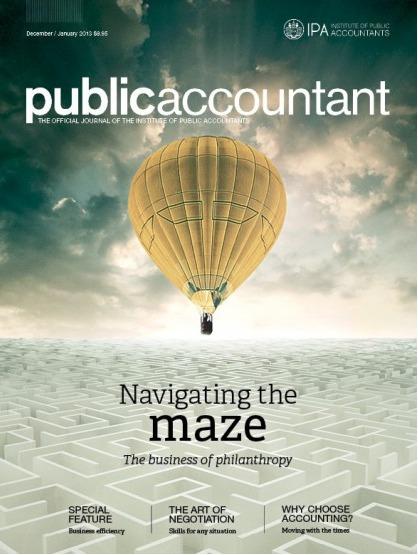First published in Public Accountant magazine, December/January 2013
Happy, engaged employees are a company’s best assets. But how do you measure and improve staff productivity?
In the last few years, tough economic conditions and rising market competition has set the stage for a new productivity imperative among Australian businesses. For companies, this has seen efficiency become a critical measure of employee performance and play a pivotal role in acquiring and maintaining a competitive edge. Despite this, the 2012 Telstra Productivity Indicator shows that while 80% of Australian businesses identify employee efficiency as an ongoing priority, only 25% were making moves to quantify, assess and improve it. The survey, which examines the views of 387 private enterprises and 109 government organisations, also highlights that a failure to take productivity seriously can see businesses forfeit market share and create major barriers to growth.
Prakash Menon, CEO mentor and executive coach, believes that this inability to recognise the true impact of productivity stems from a lack of understanding about employees’ motivations and goals. Menon, who previously served as the logistics director for Myer, says that the contemporary employee is driven by “learning opportunity” and that employers who fail to address this will see a slump in productivity.
“While it’s true that employees are a company’s biggest asset, if your staff aren’t learning anything new, it’s common for productivity to peak after the first or second year,” he says. “This can often result in high staff turnover and employee absenteeism – two important signs that employers are losing the battle when it comes to employee efficiency and productivity.”
Menon says that while most businesses advocate the value of employee development on a surface level, there is often a major disconnect between the values of an organisation and the culture it fosters. He suggests that businesses that cultivate knowledge and thought leadership, particularly in the case of top-tier or executive level staff, are those best placed to reap productivity gains.
“US company Cisco is a great example of this. They pay employees to attend and speak at industry events, put together presentations and position themselves as a brand. As a result, they experience much greater productivity levels and higher rates of employee retention,” he offers.
But if productivity is linked to investment in staff development and learning opportunity, how should companies measure their employees’ efficiency levels and identify the scope for growth? Effective productivity measurements should provide managers with data that can rank employees according to the frequency of their output as well as their quality of work. Traditionally, efficiency has been calculated by comparing the actual time it takes an employee to perform a UOS (unit of service) against the theoretical time it takes to complete the given task. However, the accuracy of this metric can fluctuate between industries and fail to take into account important variables as well as the nature of the job itself.
“In the case of retail organisation, productivity correlates with the quota of sales you make an hour. If you’re working in a warehouse, UOS is calculated according to the cartons you shift,” Menon says. “The problem with these metrics is that they don’t take into account other signs of employee productivity such as innovation.”
Menon identifies project-based metrics, which assess efficiency based on the ability to meet defined deliverables, as one way around this and stresses the importance of regular feedback to ensure that employees are meeting productivity goals.
Although it’s important that businesses measure and track efficiency, he maintains that developing a sharp understanding of the factors that impact productivity is the first step to charting an effective plan of action and paving the way for growth.
